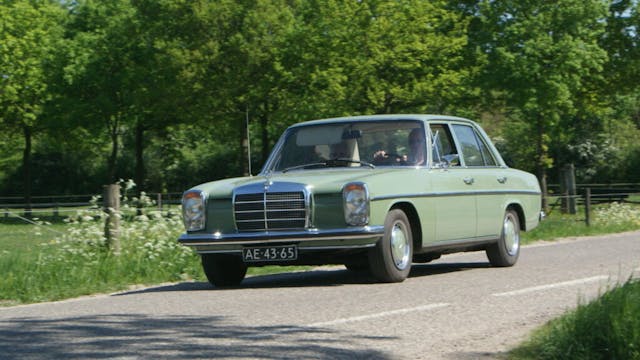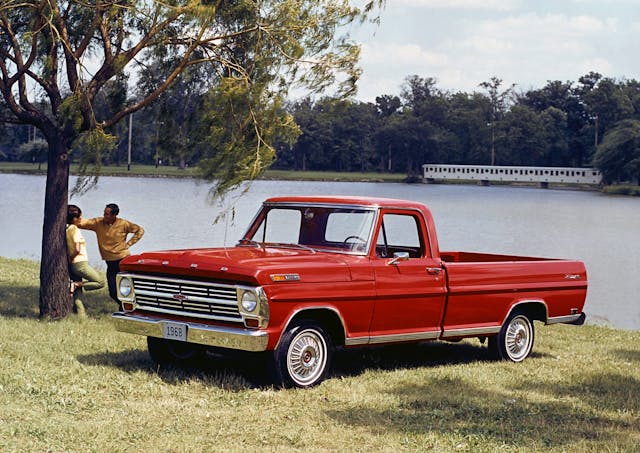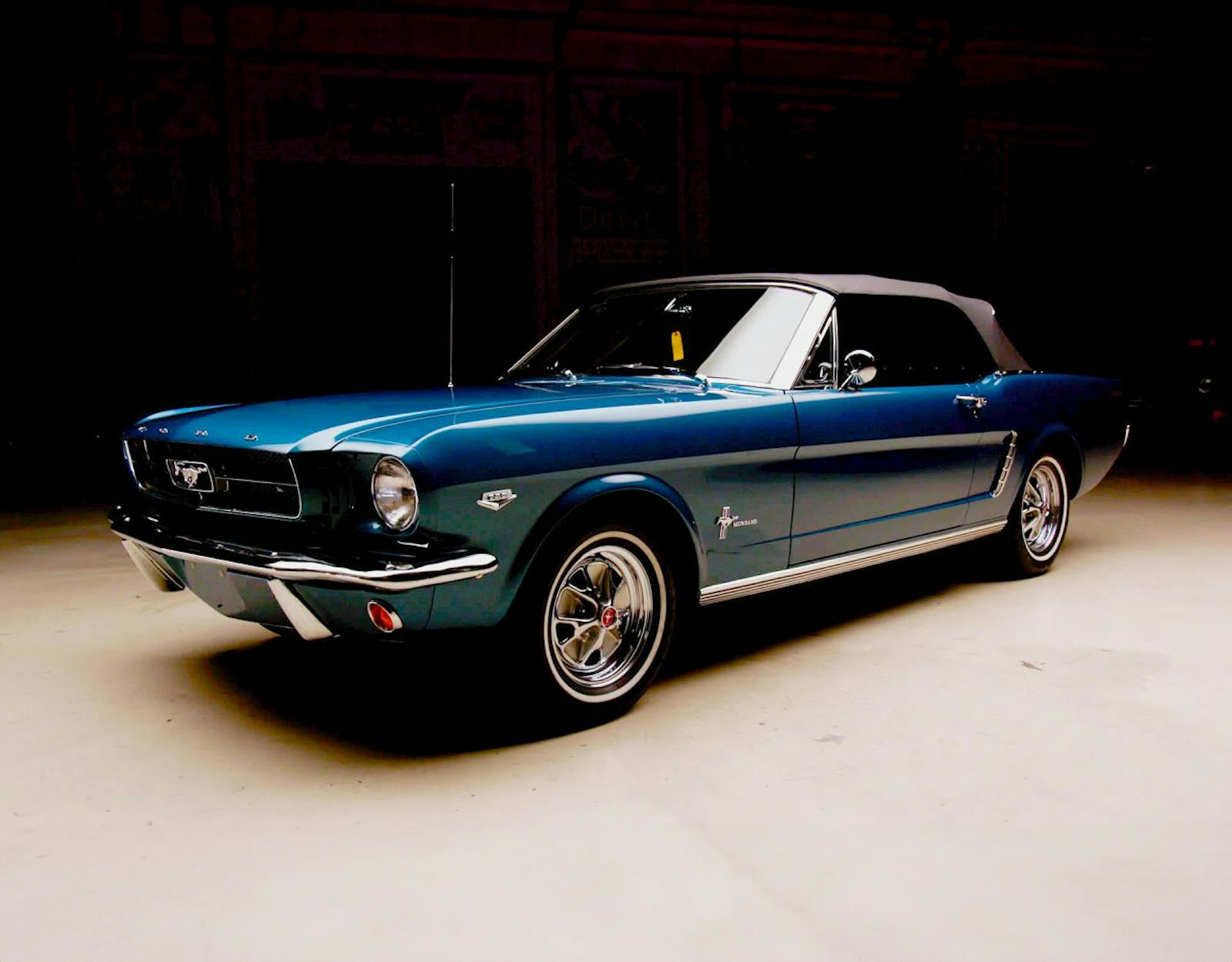5 classics heating up in the 2023 Price Guide
“Active” would be an apt description of the collector market over the first quarter of 2023. “Nuanced” would be another. In recent Price Guide publications, we could rely on more consistent value increases across the board, but that’s not the case this time around. The result has been very mixed, with some models putting up huge gains still and others contracting in value. The handful of cars that posted big gains were spread across wildly different market segments and price points. Let’s take a deeper look at the most notable value increases and what their changes mean.
1968-1973 Mercedes-Benz 220 +40%

Here in the states, Mercedes-Benz is best known for producing luxury cars with panzer-level ruggedness. The W114/W115 chassis might not have been the pinnacle of the brand’s luxury offerings, but it was pretty stout. And, with nearly two million produced, they were absolutely everywhere. Of the series, the W115-based 220 experienced some big bumps in value in our latest update. Even with the recent increases, a prime example can still be had under $20,000. This is notable for a couple reasons: there are still interesting, sub-$20,000 cars in circulation, and even high-volume cars are getting some love as their higher-priced siblings have crept out of reach for many collectors.
1967-1972 Ford F-Series Pickups +37%

Yet again, trucks are the hot ticket. This side of the market has been on a tear for well over a decade and it shows no sign of significantly backing off. As trucks from the early ’70s and prior have appreciated out of reach for many, attention has shifted to ’80s- and ’90s-era vehicles, along with a select few from the 2000s. Despite that, recent value shifts make it apparent that collectors aren’t quite ready to walk away from older models.
This past quarter, we recorded huge movement for 1967-72 Ford F-series pickups—to the tune of 37 percent. What gives? One likely contributor were the auctions in Kissimmee and Scottsdale, where trucks flourished. Modified trucks wowed with big numbers, but sales of stock examples—the vehicles we use for Price Guide valuation data—exceeded expectations as well. In addition, the F-series had some ground to make up when compared to the 1967-72 Chevrolet and GMC C/K-series trucks, which had commanded a premium over its Blue Oval competition for a while.
1969-1970 Pontiac GTO Judge Ram Air IV +36%

The muscle car market has been one of the most volatile and nuanced segments of the market going into the beginning of the year, with some series still increasing in value by leaps and bounds and others edging back. The biggest surprise comes to you curtesy of the 1969-70 GTO Judge, specifically the ones equipped with the high-performance Ram Air IV engine.
The 36 percent increase reflects a strong showing of GTOs in January. Of all the cars offered, nearly every one of them shattered their condition-appropriate price guide estimates. The takeaway here is that high-spec cars in exceptional condition are still garnering strong prices in many cases. What the muscle car market looks like down the road remains to be seen, though. Prices are mixed overall, and that could indicate that the segment is approaching a peak.
1946-1948 Pontiac Streamliner +35%

There’s another Pontiac in the latest Price Guide update that merits mention—one from an era that rarely snags the spotlight. American cars produced immediately after World War II fall in between segments of interest for collectors: they’re not old enough to be grouped with prewar cars even though their designs were carryovers from when production stopped for the war effort, and they precede the late ’40s and early ’50s jet-age styling we closely associate with the postwar era.
Likely for this reason, cars like the 1946-48 Pontiac Streamliner have maintained a steady value for years, only seeing a noticeable increase now. Despite the big bump, these vehicles remain relatively affordable: a Streamliner coupe in near-perfect condition is still a sub-$50,000 car, and excellent-condition cars trade for just under $30,000. After lagging behind while the rest of the market posted huge gains, these cars have finally caught up. Usually in cases like this, future increases like this aren’t in the cards, but time will only tell.
1973-1980 Ferrari Dino 308 GT4 +33%

Dinos are on the rise, although this model is distinct from the 206 and 246 Dinos that have captured headlines over the last eighteen months. We’re talking here about the 308, which saw strong gains this past quarter. While V-8-powered (the Dino name is usually associated with V-6-equipped cars), the 308 GT4 was also sold under the Dino banner for the first few years of production.
Here’s the most noteworthy bit: The 308 GT4 is starting to close the value gap between it and the more striking two-seater 308 GTB of the same period, which posted slight losses over the past quarter. It is unlikely the 308 GT4 will see additional large increases like this in the near future. Still, its gains indicate that there is still plenty of movement in less expensive Ferraris despite the broader market’s mixed outlook.
***
Check out the Hagerty Media homepage so you don’t miss a single story, or better yet, bookmark it. To get our best stories delivered right to your inbox, subscribe to our newsletters.
Via Insider



With most pickup prices through the roof, I am sure any survivors from the 1960-1970 era are caught up in the tornado.
But I am sure very few farm/ranch/construction units made it this far.
Only problem with the MB’s is the ungodly dealer maintenance costs…….love the MB 280’s ……however I guess I will stick with my 10th Volvo S60 AWD. Has 56k on the 2015 Platinum..
I have to agree. My uncle had a 72 280 SEL in the early late 70’s, early 80’s when it was still considered late model. The V8 ran great but it didn’t have iron liners in the aluminum block>>made for an oil burner. He had a ring job done (it was $2000 then) and traded it. It also had the nightmare fuel injection on it that fortunately was running fine.
Dealer repair cost on a 1968 ? Is that serious ? I own a 1998 Jag and I have called all 4 jag dealers within 200 miles of me, and they refuse to do any significant work on any jag over 10 years old (they will only do oil changes and mufflers). Straight up parts from the dealers on these imports can be unbelievable But repair and maintenance ? I would bet most dealers would refuse to work on them.
I never understood the relative lack of collector interest in the 308 GT4. Frankly, you could argue that the 308 GT4 is a better-looking design than the 308 GTB. The 308 GT4 is less fussy, with fewer holes and slats. And the 308 GT4 looks really good in every color, including the “black bottom” versions like the car in the photo. And… the GTB doesn’t fit tall drivers at all. If you are 5’10” or taller, its tough to feel like you fit in a 308 GTB or GTS with the roof panel installed. Did Tom Selleck EVER drive the Ferrari on the TV show with the roof panel in place? I don’t think so. His head was above the windshield frame every time they showed Magnum seated in the GTS. While the 308 GT4 will accommodate drivers up to at least 6′ 2″ (from personal experience).
I have to admit I wouldn’t notice the Mercedes or the Ford pickup if they were driving down the street. The Pontiac Streamliner? Yes, please. My parents, of the WWII generation, called it a torpedo back. I’ve also heard it called a vastback. I don’t mean fastback. I love those Pontiacs and Chevy Fleetlines.
I chuckled a bit when I read this list. I own a nice “driver” Mercedes 1973 280. It has four wheel disc brakes, AC, power windows and shoulder belts! In North American these are notoriously low value. The price of parts can quickly doom rougher examples, but these were good cars when they were built and continue as great value.
I have a non runner, 1948 Pontiac Business Coupe, in storage. I’m surprised to see it in the same article as the merc. Lol
My 1968 Jeep Gladiator pick up has the gas cap in the box, and the tank under the bed between the frame, unlike Chevys that had a gas tank out side of the frame rails.
1946-1948 Pontiac Streamliner for around $30k? Are you serious. Someone is just running out cars & topics to post. This column is becoming a waste of time. Pleas find a writer who has more experience in truly understanding the market value of collector cars.
Hi Phillip, sorry to hear you feel that way. I wrote the article and also happen to manage the production of the price guide. But if you have any constructive feedback on where we’re missing the mark, I’m open to feedback. I thought I outlined accurately the reasons why the Streamliner was a significant car to mention as it was percentage wise one of the biggest movers, but completely understand if the picks don’t speak to everyone as this is a data based list and not opinion based.
Yeah but nothing beats the look of the CST and the NBS…
It is my humble opinion that most original or body-off restorations of well-documented solid lifter Big Block cars will always command serious pricing. Case in point, mid-year corvettes 425 or even 390 or 400 HP. I can list many others but you get the idea. I contend prices are predominantly stagnant at this time or in some cases, sellers are living in a dream world but just do not see the market going backward with these cars.
I still drive my dad’s ’76 f250 XLT about every day. Always gets the looks. Original 460 biggie and drive train with low gears and every tow package option they offered. It will pass anything on the road except a gas station!
With these increases an owner of one of these has done well. To expect them to continue to increase at this pace may not be reasonable. I’ve learned that lesson. Maybe the Ferrari would be an exception as the pockets of these buyers are deep.
My first car was a 47 Pontiac Torpedo, bought it from the original owner. When I moved from New York to Arizona I couldn’t take it with me. My parents kept it in storage until they move to North Carolina. It was sold, I wonder where it is now. Had a chance to buy one a few years ago, but a full garage killed that.
The GTO would be my favorite of this list.
I am amazed at how many people missed the point of the article entirely. I think the key here is focusing on the percentages. For every person that balked and thought you “aint gonna get rich” collecting 47 pontiacs or 70s small benzes – you have missed the point. What the author is trying to tell you is if you find a 48 pontiac torpedo back for $20,000 go ahead and buy it. Drive it to some car shows for a year or two and if you decide to sell it – based on the trends he is seeing you might sell it for $5-6,000 more than you paid. On the other hand a car not on the list, say you spend $8,000 on 1987 corvette – when you go to re-sell it you might not profit 30%
I have a 48 Olds torpedo back series 66. My 1’st car in 1965. I took care of it and it never saw winter salt. Solid car with no rust. In-line 6. Restoring now hope to get it back on the road this summer. My value on it is sentimental.